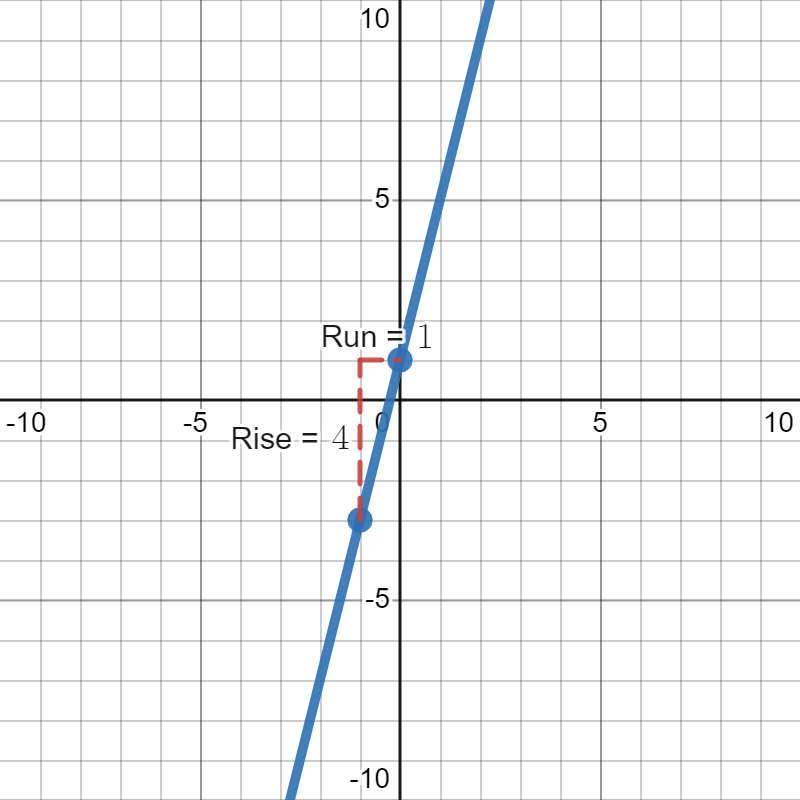Section 7.1 Slope of a Line
Definition 7.1.
The slope of a line measures how slanted it is. If we know two points \((x_1, y_1)\) and \((x_2, y_2)\text{,}\) we can compute the slope as
Notice that this is the same as \(\dfrac{y_1-y_2}{x_1-x_2}\text{,}\) but it is not the same as \(\dfrac{y_2-y_1}{x_1-x_2}\text{.}\) In other words, you can subtract in either order you want, as long as you either start with both 1's or both 2's.
Example 7.2.
Suppose we want to compute the slope of a line between the points \((2,7)\) and \((-3,1)\text{.}\) Then, we can compute
Let's check that if we subtract the other way around, we indeed get the same answer:
Checkpoint 7.3.
Compute the slope of the line between the points \((-5,5)\) and \((3,-1)\text{.}\)
\(-\dfrac{3}{4}\)
We can compute
Let's check that if we subtract the other way around, we indeed get the same answer:
So far, we have only talked about slope numerically. Here is what positive and negative sloped lines look like:
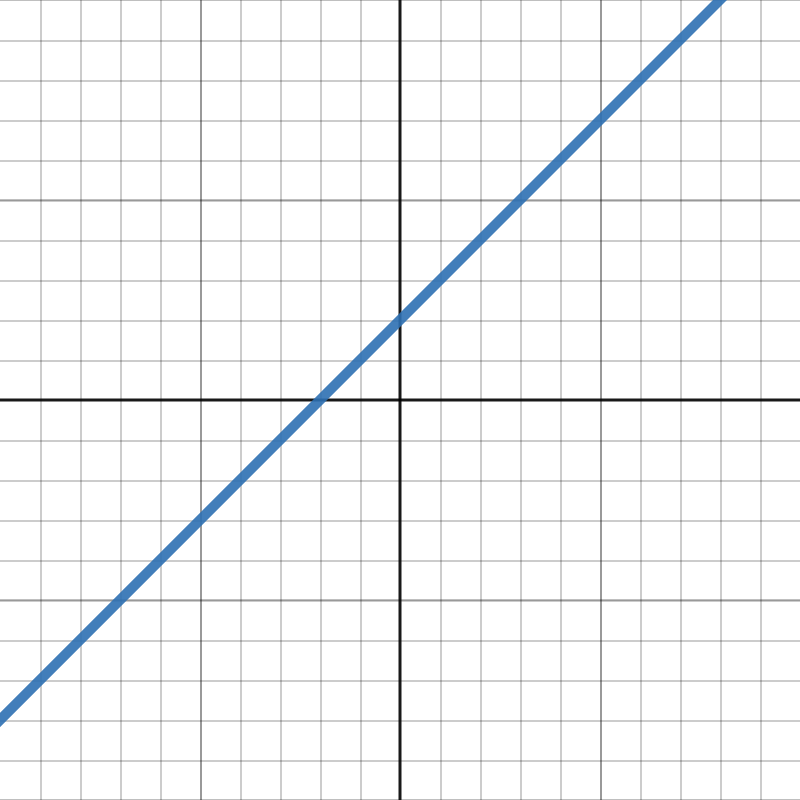
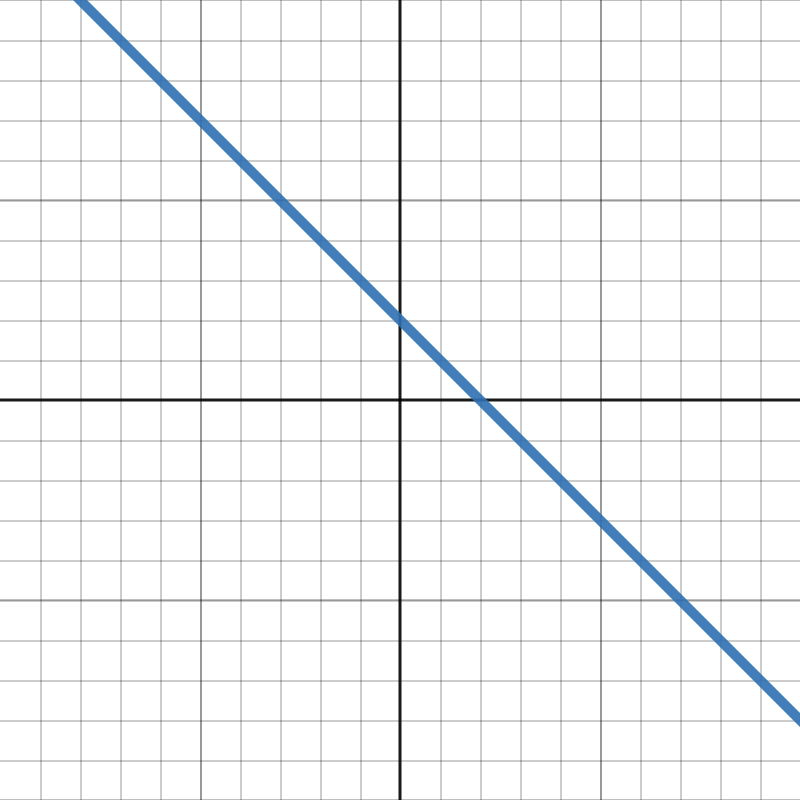
If we want to compute the slope of a line when we are given a graph, we can either pick two points on the line (any two points!) and compute slope using the formula we did before, or you can use another way of thinking about the slope formula:
where "rise" means how much we move up, and "run" means how much we move to the right.
Example 7.6.
Let's compute the slope of the line below
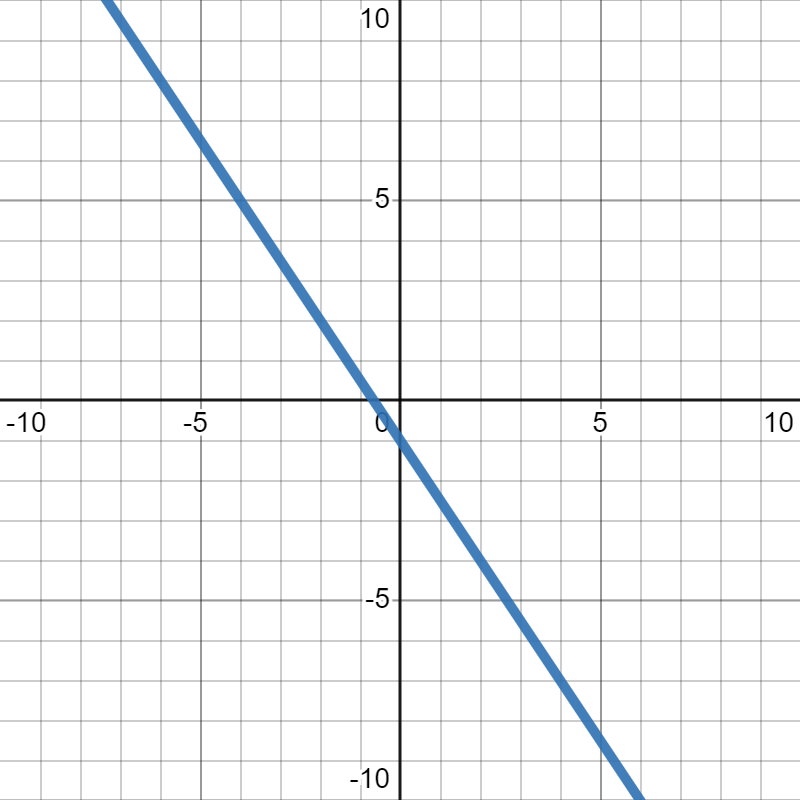
Let's pick the point \((0,-1)\) as our starting place, and then \((2,-4)\) as our ending point. Then, we rise \(-3\) (since we have to go down \(3\)) and run \(2\) (since we have to go to the right \(2\)). So, we can compute the slope as
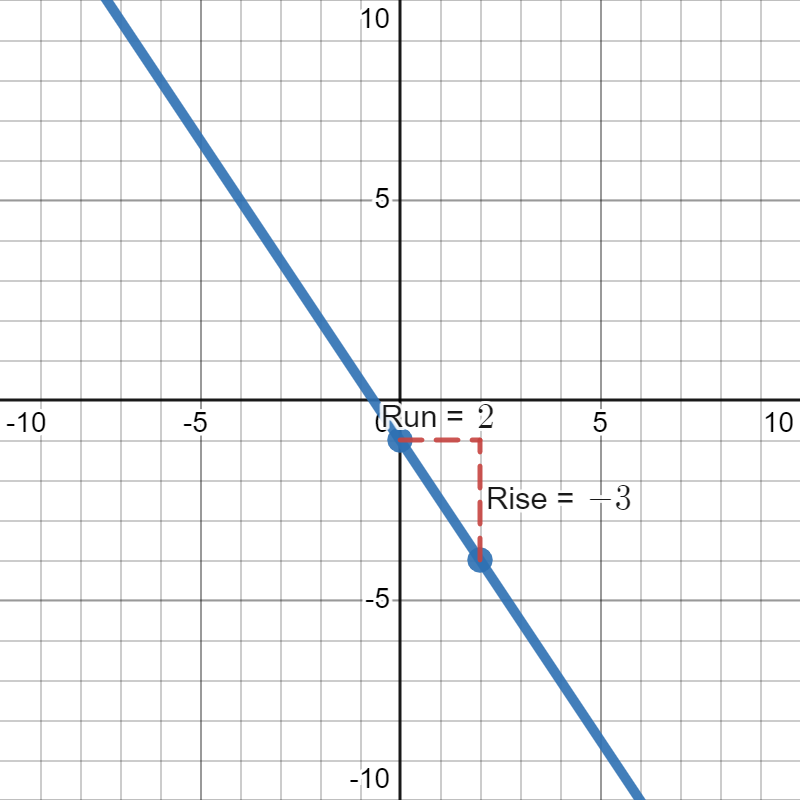
Checkpoint 7.7.
Compute the slope of the line below:
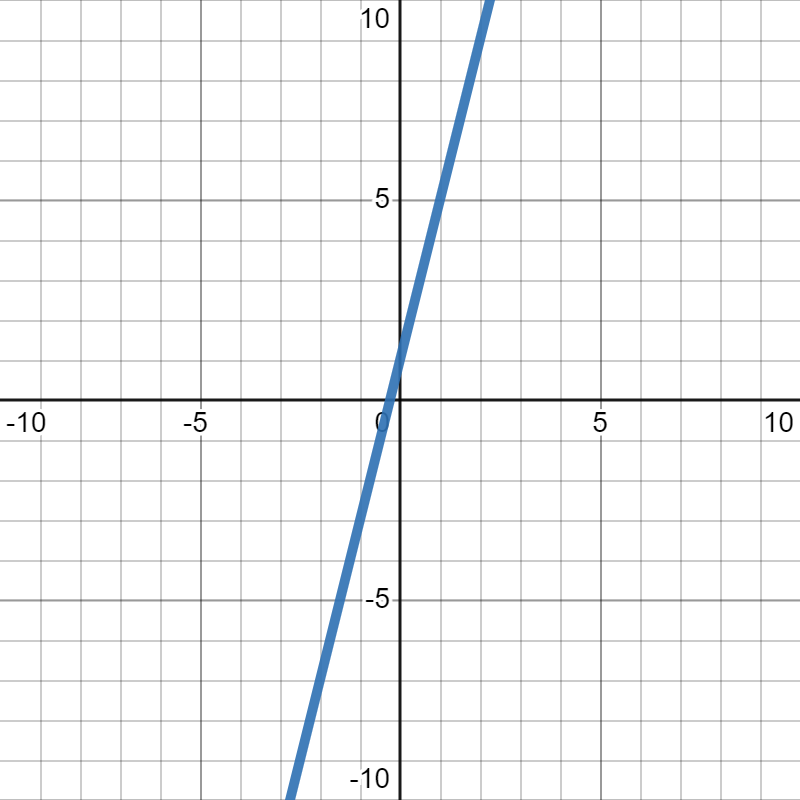
\(4\)
Let's pick the point \((-1,-3)\) as our starting place, and then \((0,1)\) as our ending point. Then, we rise \(4\) (since we have to go up \(4\)) and run \(1\) (since we have to go to the right \(1\)). So, we can compute the slope as
